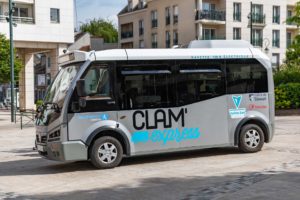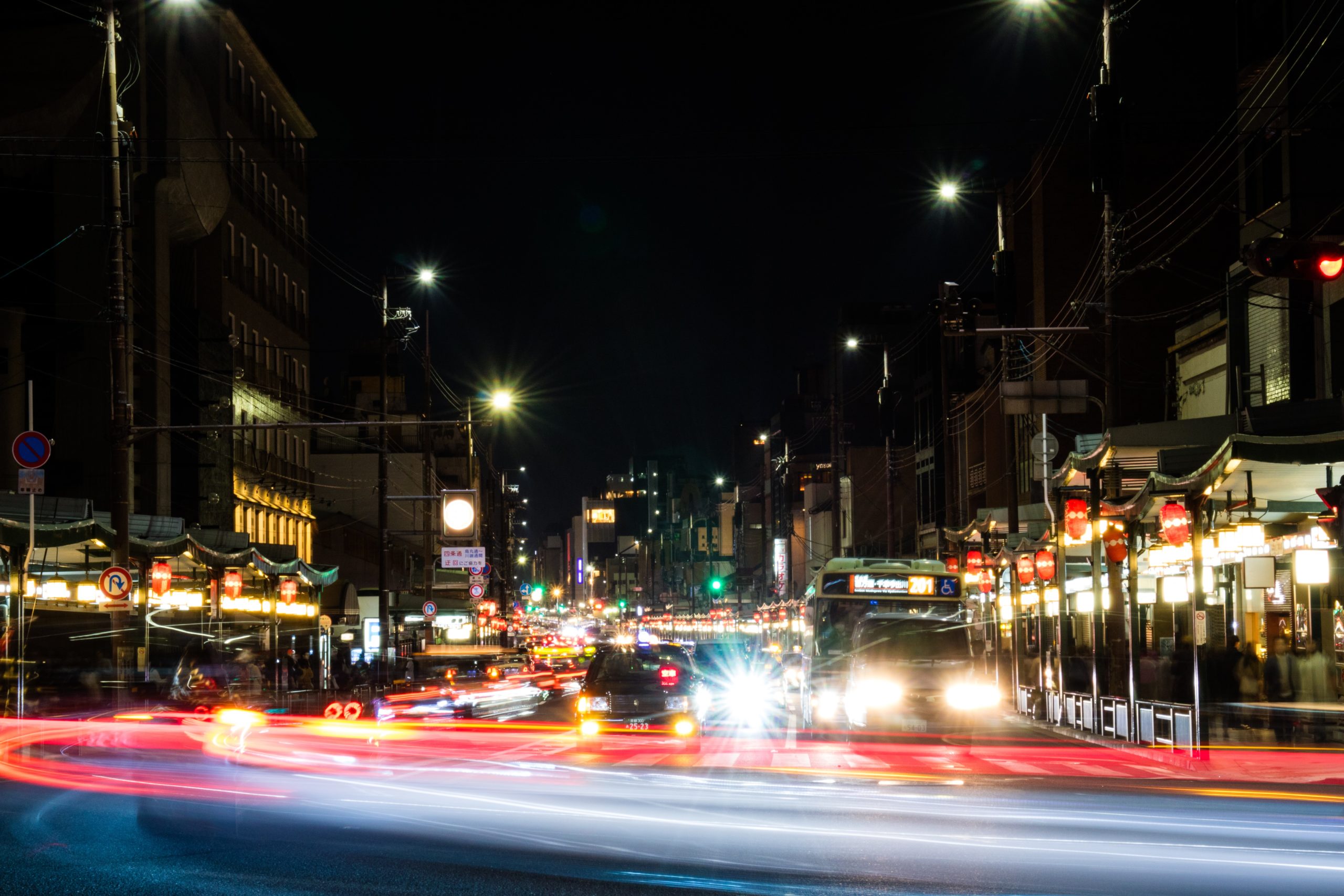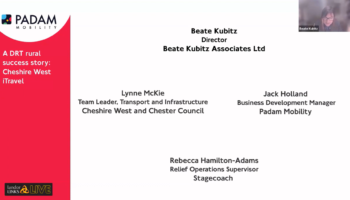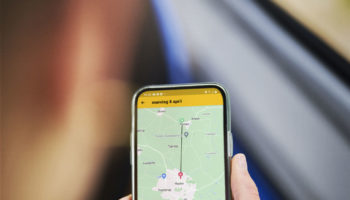Is DRT relevant in an urban areas? In this series of articles, we propose to deconstruct the preconceived ideas about Demand-Responsive Transport (DRT). Common misconception #3: ” DRT is for the countryside “.
Some urban actors are reluctant to set up a dynamic DRT service, considering this travel solution mainly addresses the use cases of peri-urban and rural areas. While it is true DRT is a solution particularly suited to low-density areas, its implementation is nevertheless relevant in urban areas for several reasons.
Urban by nature
The first forms of DRT developed in some major American and European cities during the inter-war period, in a context of economic crisis and scarcity of resources. Traces of their existence in the Paris region can be found in the 1930s in the form of collective taxis which offered their clients the possibility of making inner-city trips by sharing their ride with other people in order to lower the price (Castex, 2017).
In Europe and North America, collective taxis will gradually evolve into regulated forms of public transport which will be officially called Demand-Responsive Transport (DRT) later on. In France, the first DRTs, as organised and regulated systems, will then effectively appear and be developed in the regions with the French Departmental Transport schemes of 1974, hence their reputation as a mobility solution in rural areas.
A mobility solution that effectively complements the conventional transport offer, regardless of the spatial context
The DRT is not limited to any one type of territory. On the contrary, its flexibility, the speed of its deployment and its infrastructural independence allow it to touch all types of use cases, regardless of their spatial context of intervention.
Generally speaking, the DRT will prove to be relevant in all cases where the conventional transportation offer will show its limits.
- When the demand is too low, too diffuse or too uneven, the DRT provides or complements the transportation offer (e.g. DRT services at off-peak times and especially at night, mainly aimed at young, workers and tourists).
- When the offer is too poorly adapted to the most vulnerable ones, the DRT provides a solution for travel, at any time of day, that is calm and adapted to vulnerable populations (e.g. shuttle services mainly aimed at the elderly, PRMs and minors).
- When the conventional offer is saturated, DRT reinforces it “in duplicate” on the “black spots” of the existing network or on a particularly popular itinerary (e.g. airport shuttle).

The urban DRT also makes it possible to provide adapted solutions to support specific public policies:
- Fight against the forms of insecurity encountered by some groups (e.g. shuttle service reserved for women).
- Pedestrianisation of some districts or the city centre (e.g. shuttle service to/from car parks on the outskirts)
More symbolically, the urban DRT allows a municipality to mark its commitment to reducing the modal share of non-shared modes and to a more integrated, inclusive, accessible, intelligent and sustainable mobility.
Allowing people to travel at night with complete freedom, flexibility and safety, the example of Night Bus
With more than 210,000 inhabitants, the city of Padua (Veneto, Italy) had no night-time public transport solution. Conventional buses stopped their service at 9 pm, which was a hindrance to the city’s highly developed night-time activity. Following some security problems, the implementation of a safe transport solution in the evening and at night became a necessity to improve the well-being of the population and to preserve the attractiveness of the university campuses which attract some 60,000 students.
To meet these challenges, the local public authorities chose Padam Mobility technology to operate a night-time urban DRT service in partnership with Busitalia Veneto, the local urban transport operator. The DRT Night Bus service is created. It is configured in such a way as to provide a relevant travel solution that guarantees the safety of users, most often young people and women. Complementing the public transport network in the evenings and at night, the service serves all major night-time activity centres, even those located on the outskirts, offering an alternative to accidental travel solutions in an often festive student environment (scooters, cars, bicycles, etc.).

Le succès de Night Bus est immédiat, notamment auprès des étudiantes. Aujourd’hui, il continue d’enregistrer des performances qui vont bien au delà des prévisions initialement émises :
- Plus de 12000 usagers transportés depuis le lancement du service
- Jusqu’à 2400 réservations par mois
- Jusqu’à 2500 téléchargements de l’application par mois
- Jusqu’à 80% de taux de groupage
The success of Night Bus is immediate, especially among female students. Today, it continues to record performances that go far beyond the initial forecasts:
- More than 12,000 users have been transported since the launch of the service
- Up to 2400 bookings per month
- Up to 2500 application downloads per month
- Up to 80% pooling rate
These articles may be of interest to you:
Is it possible to control the budget of a Demand-Responsive Transport?





